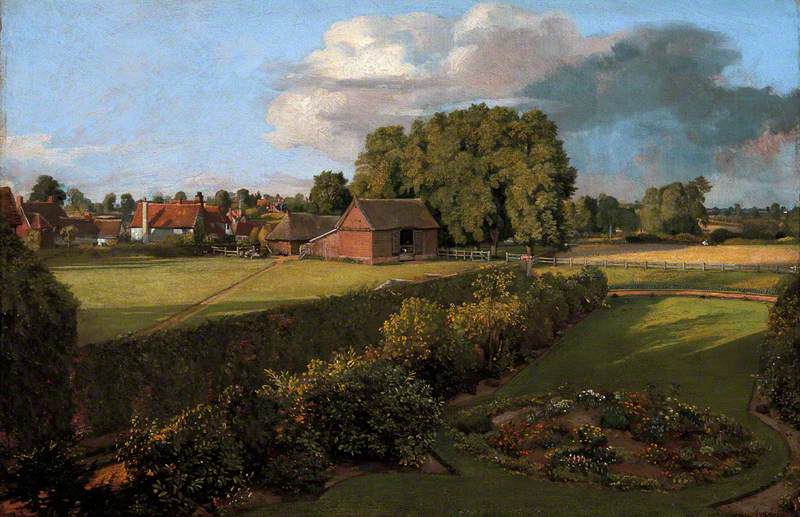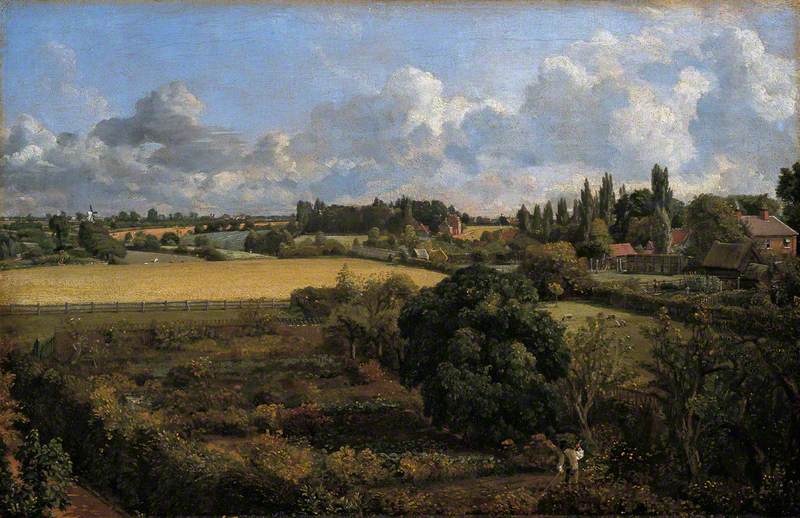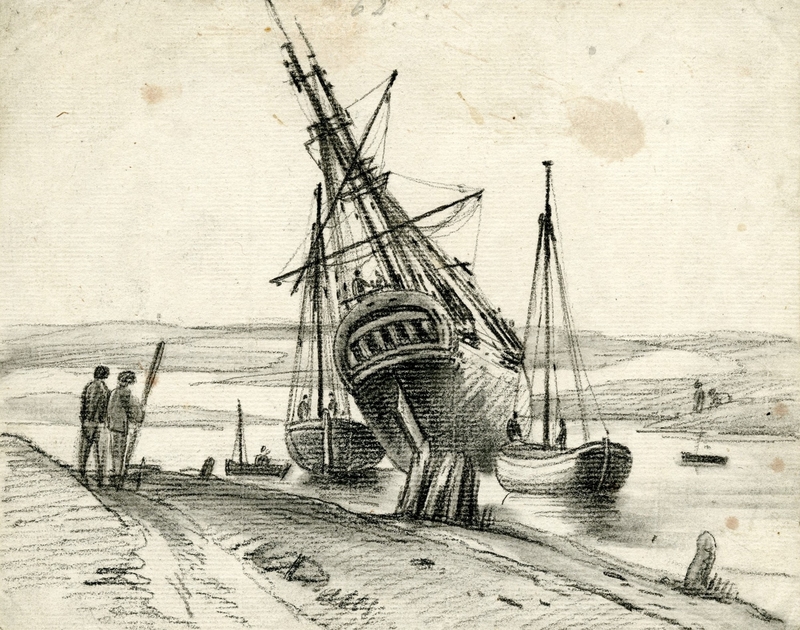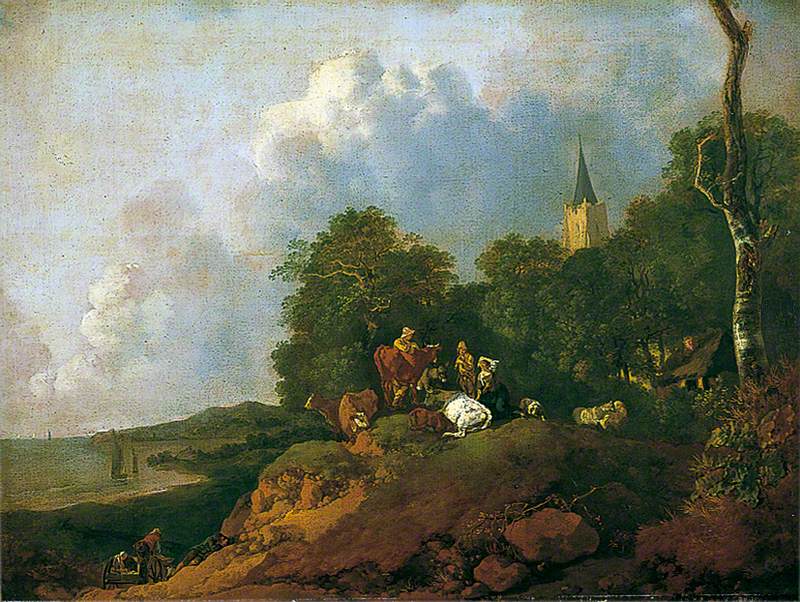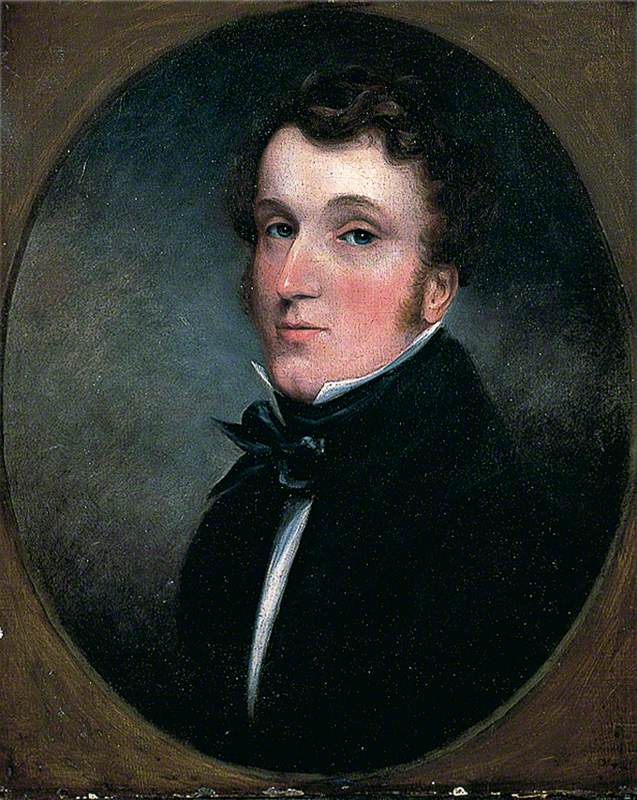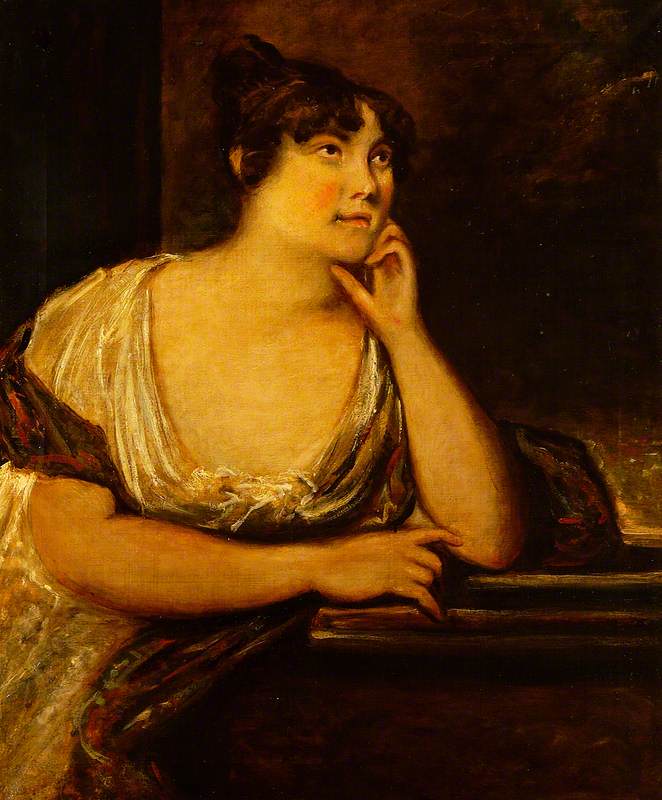Christchurch Mansion is one of Suffolk’s most treasured buildings. This beautiful Tudor mansion is the jewel in the crown of Ipswich’s historic past, boasting over 500 years of history. The collection contains Suffolk artists including the biggest collection of Thomas Gainsborough, John Constable and their Suffolk contemporaries outside of London.
Art Unlocked is an online talk series by Art UK in collaboration with Bloomberg Philanthropies. This Curation is based on a talk by Emma Roodhouse, Collections and Learning Curator Art at Colchester and Ipswich Museums, on 7th June 2023. You can watch a recording of the talk on Art UK's YouTube channel.
-
Golding Constable's Flower Garden
Golding Constable's Flower Garden 1815In 1799, when Constable was 22, he finally obtained permission from his parents to study art at the Royal Academy Schools in London. Constable had a close relationship with his family at East Bergholt, where he continued to keep a studio.
In the summer of 1815 Constable was in mourning for his mother, who had died in the March. She had fallen ill whilst gardening and Constable was unable to attend her funeral. Constable painted the garden in evening shade and with the flowers his mother had planted in full bloom. The loss of his mother must have left the artist in deep sorrow.
John Constable (1776–1837)
Oil on canvas
H 33 x W 50.8 cm
Colchester and Ipswich Museums Service: Ipswich Borough Council Collection
-
Golding Constable's Kitchen Garden
Golding Constable's Kitchen Garden c.1815This view shows the land and mill owned by Constable’s father, Golding. The kitchen garden is shown in morning light and includes a view towards the rectory, where Constable’s future wife, Maria Bicknell, would stay when visiting her grandfather.
In the summer of 1815 Golding’s health was failing and Constable would stay with his father, spending time in the fields drawing and painting. Constable never exhibited or attempted to sell the two garden paintings during his lifetime. Although highly finished, these were private works, a record of the landscape that was precious to him.
John Constable (1776–1837)
Oil on canvas
H 33 x W 50.8 cm
Colchester and Ipswich Museums Service: Ipswich Borough Council Collection
-
Ship
ShipA self-taught artist, art collector and prolific sketcher of Ipswich’s streets and people. Frost was born in Suffolk and from 1770s lived in Ipswich. His job was to run the coaches that went from Ipswich to London, but he had a reputation as a local artist and drawing master. Frost and his wife, Mary, lived on Brook Street close to the Coach and Horses Inn. He greatly admired the artworks by Gainsborough and had his own collection of prints and drawings by the Suffolk artist. By 1800 he had met a young John Constable, who was keen to find out about his collection of Gainsborough’s and go sketching with Frost. In 1813 Frost retired from the coaching business and moved to the Ipswich dockside area. This gave him more time to draw in pencil, charcoal and chalk or paint in watercolours. He died on 28 June 1821 and was buried in St Matthews churchyard in Ipswich.
George Frost (1745–1821)
Conté crayon on paper
H 16.5 x W 20.5 cm
Colchester and Ipswich Museums Service: Ipswich Borough Council Collection
-
View near the Coast
View near the Coast 1750–1755This view of a Suffolk estuary is an early Gainsborough landscape. Landscape painting had been a great passion of the artist and in the 1760’s he wrote to a friend stating he was ‘sick of portraits’, and that he would rather take his viola da gamba off to ‘some sweet village’ where he could paint landscapes and ‘enjoy the fag end of life in quietness and ease’.
Constable greatly admired Gainsborough’s landscapes and sought out private collections of paintings and drawings belonging to Ipswich people, who had known the artist.
Thomas Gainsborough (1727–1788)
Oil on canvas
H 81.2 x W 107.7 cm
Colchester and Ipswich Museums Service: Ipswich Borough Council Collection
-
Self Portrait
Self Portrait c.1820Johnny was Constable’s assistant and helped with several of his larger canvases. He also exhibited his own work in the Royal Academy and worked as a picture restorer. This self-portrait is a rare image of the artist, who unfortunately died at a young age.
‘I have written to Dunthorne to send me Johnny. He is not at all vulgar, and naturally very clever; but where he not, I should love him for his father’s sake.’
John Constable writing to Maria Bicknell in 1814.
John Dunthorne IV (1798–1832)
Oil on canvas
H 30.5 x W 25.5 cm
Colchester and Ipswich Museums Service: Ipswich Borough Council Collection
-
Mrs Elizabeth Cobbold (1765–1824)
Mrs Elizabeth Cobbold (1765–1824) c.1800–c.1820'A botanist one day, or grave antiquarian,
Next morning a sempstress, or abecedarian;
Now making a frock, and now marring a picture,…
Though science and friendship are nearest my heart.'
Written by Elizabeth Cobbold to describe her varied pursuits.
Elizabeth Cobbold was a friend of the Constable family and encouraged the young John Constable in his artistic career. Elizabeth had an extensive social network and introduced Constable to Priscilla Wakefield, Quaker writer and philanthropist. Wakefield was able to provide an introduction to Joseph Farington RA, who could help Constable into the Royal Academy Schools.
George Frost (1745–1821) (attributed to)
Oil on canvas
H 92 x W 76 cm
Colchester and Ipswich Museums Service: Ipswich Borough Council Collection
Explore artists in this Curation
-
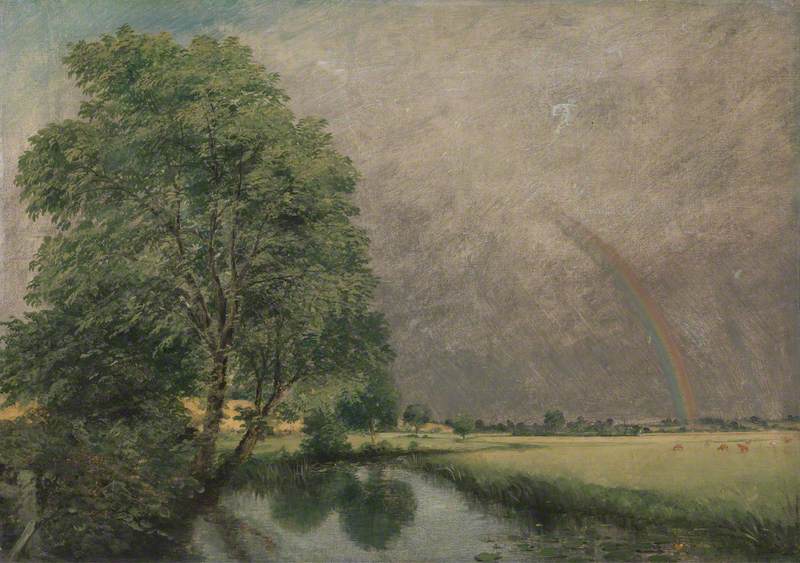 John Dunthorne IV (1798–1832)
John Dunthorne IV (1798–1832) -
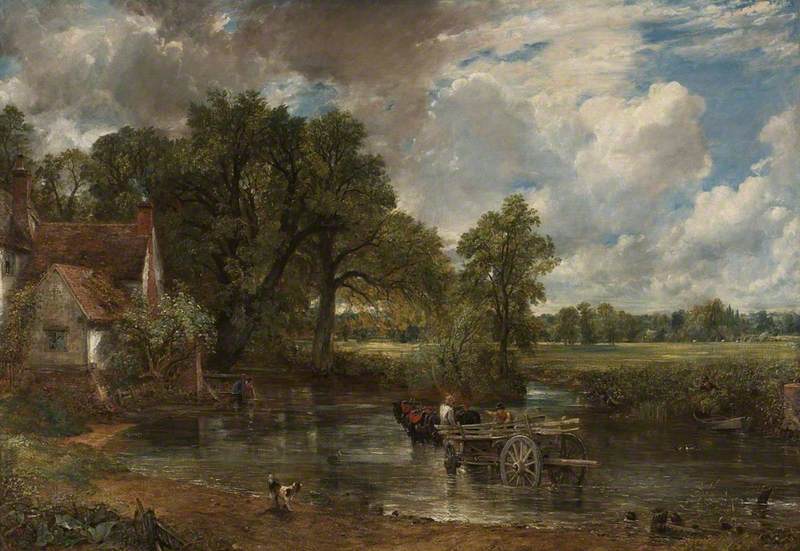
Image credit: The National Gallery, London
John Constable (1776–1837) -
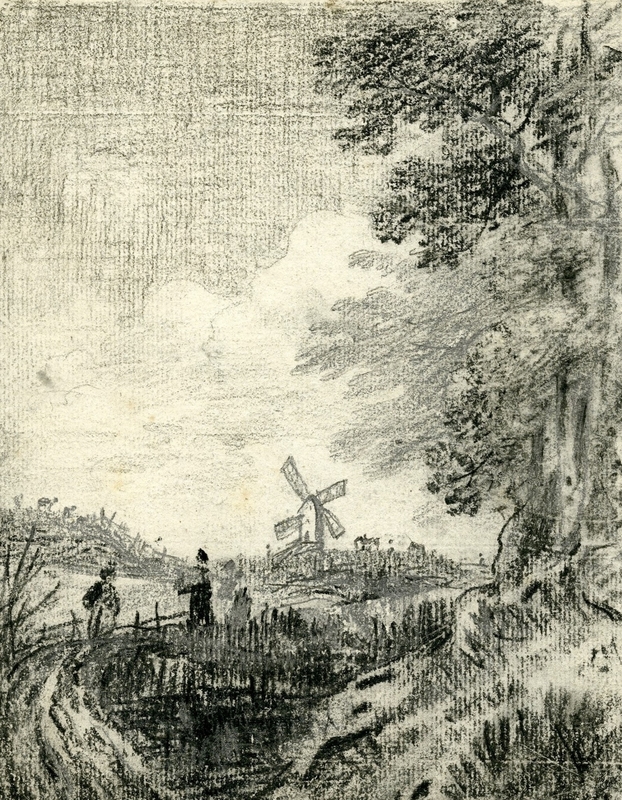
Image credit: Colchester and Ipswich Museums Service: Ipswich Borough Council Collection
George Frost (1… -
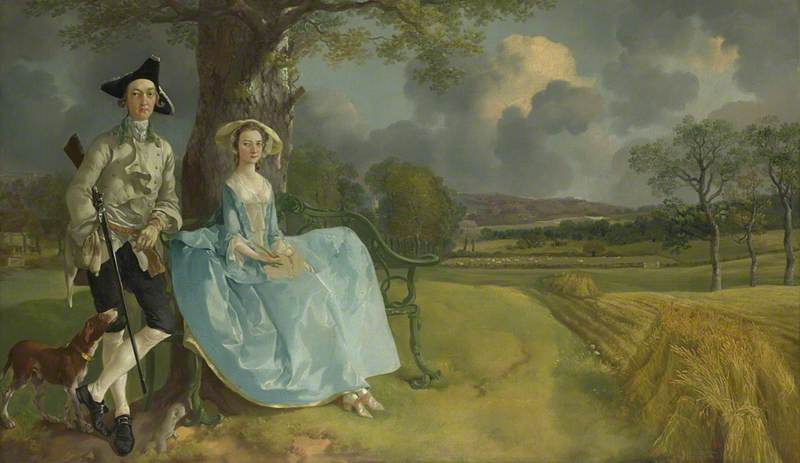
Image credit: The National Gallery, London
Thomas Gainsborough (1727–1788)
